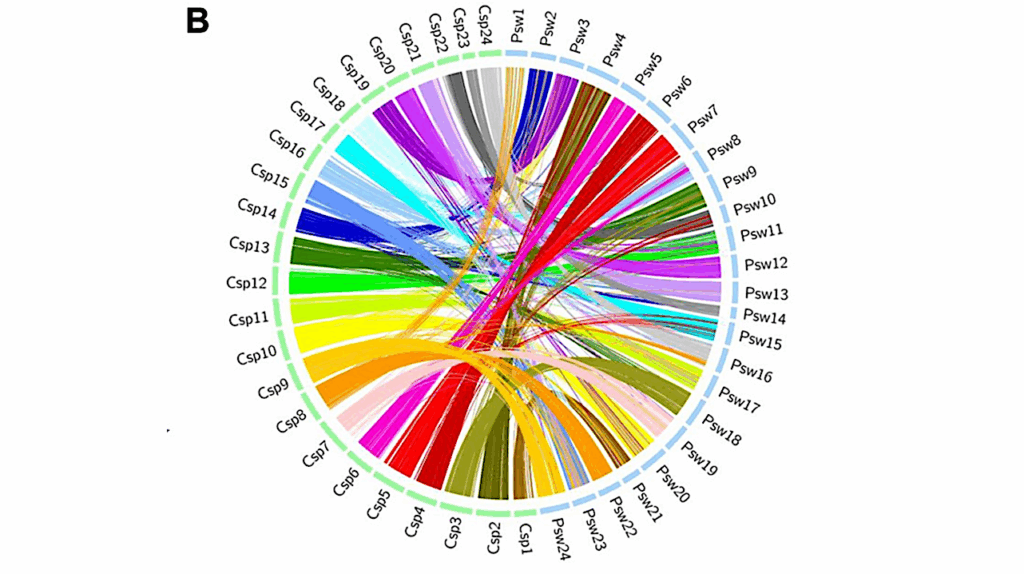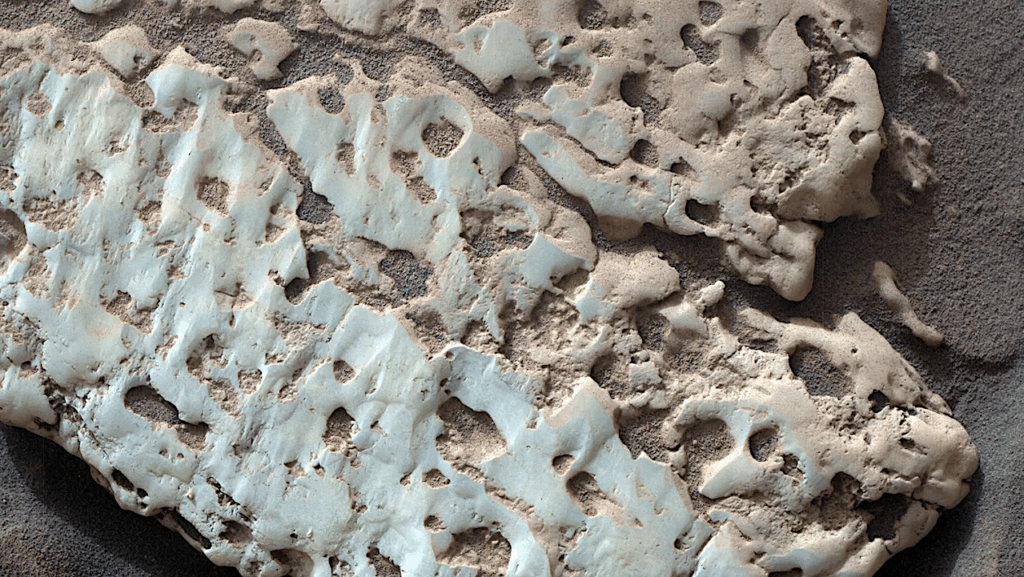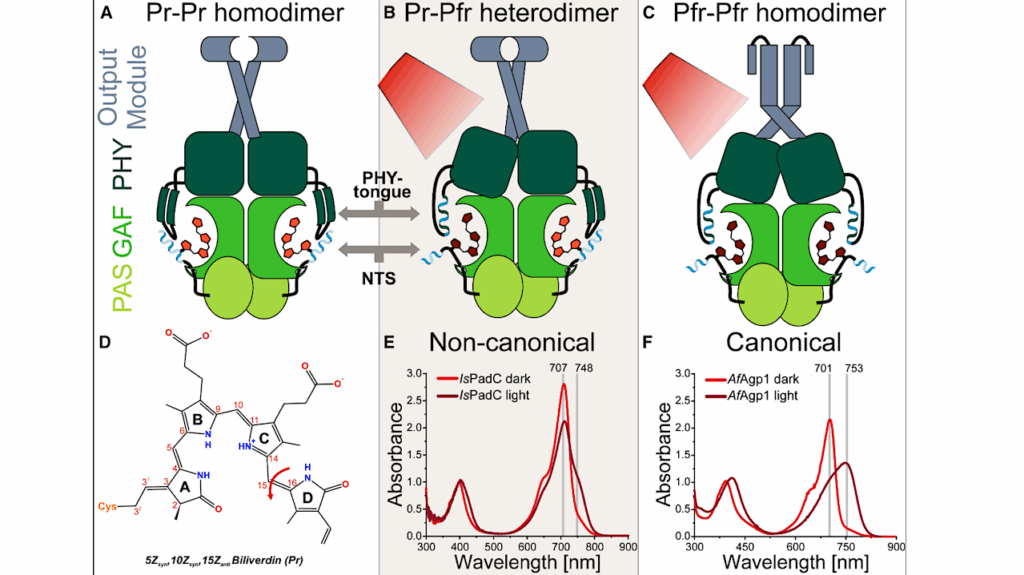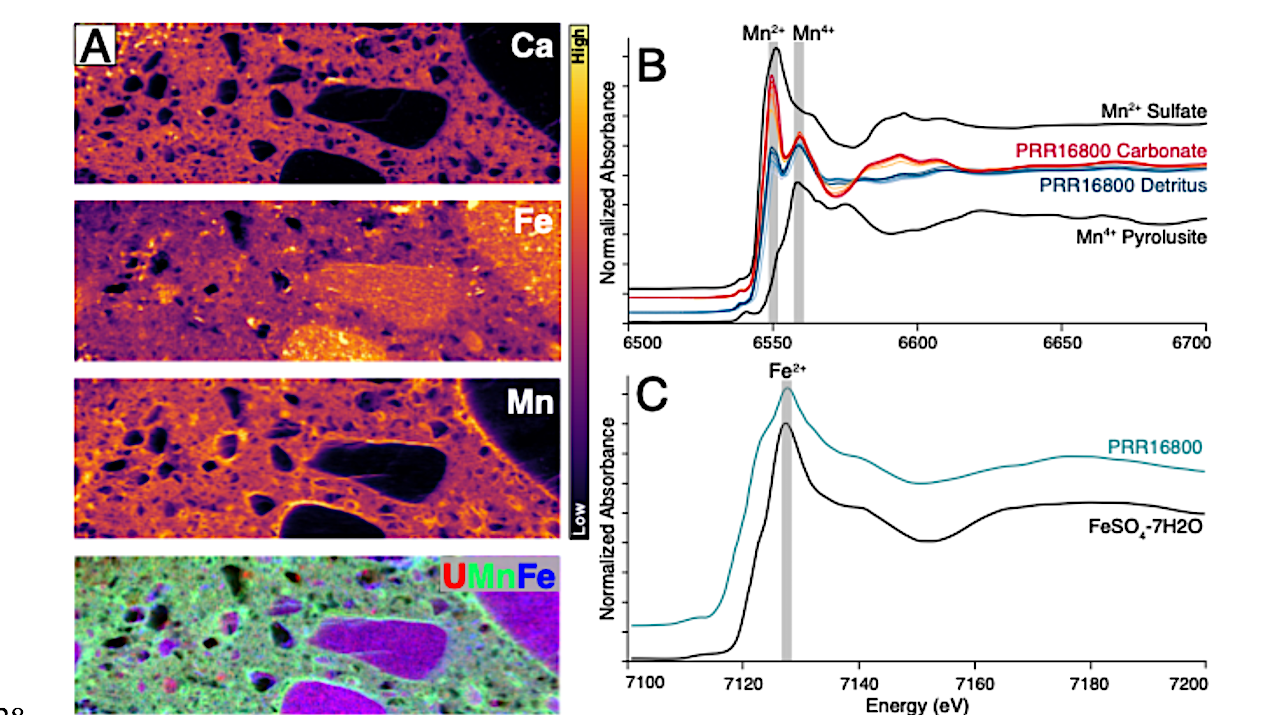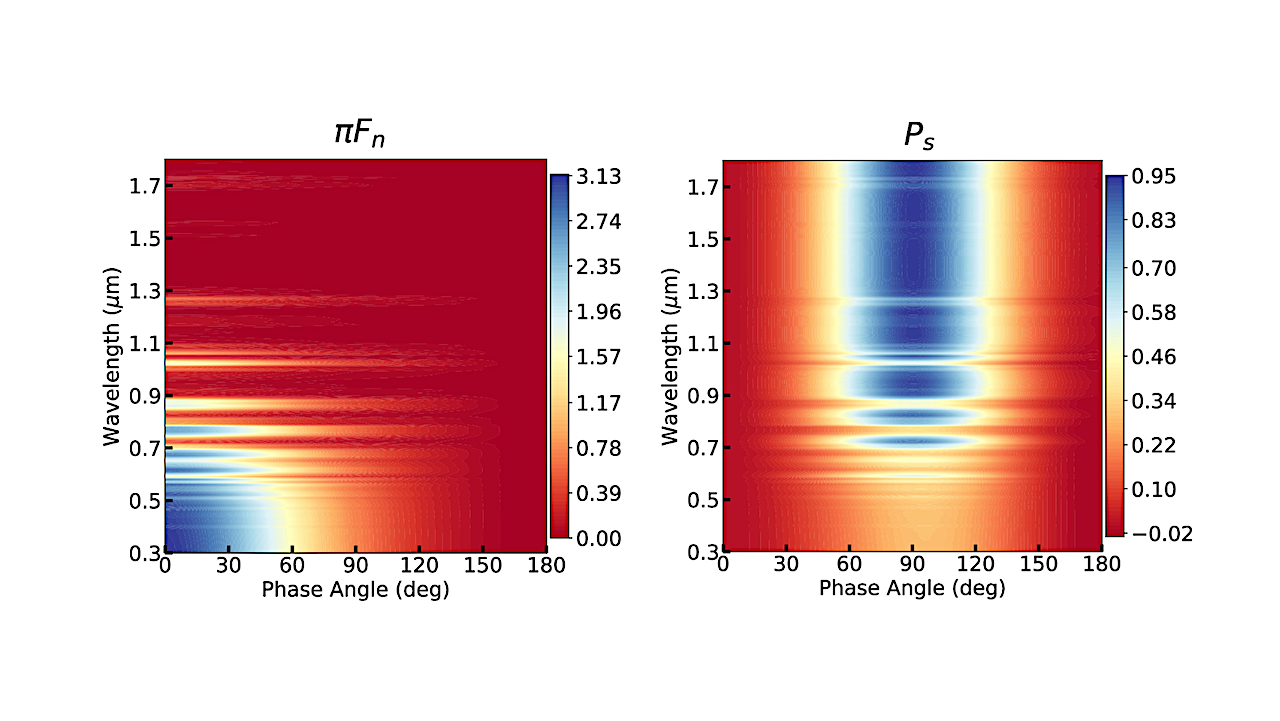Now Reading: Carbonates Identified By The Curiosity Rover Indicate A Carbon Cycle Operated On Ancient Mars
-
01
Carbonates Identified By The Curiosity Rover Indicate A Carbon Cycle Operated On Ancient Mars
Carbonates Identified By The Curiosity Rover Indicate A Carbon Cycle Operated On Ancient Mars
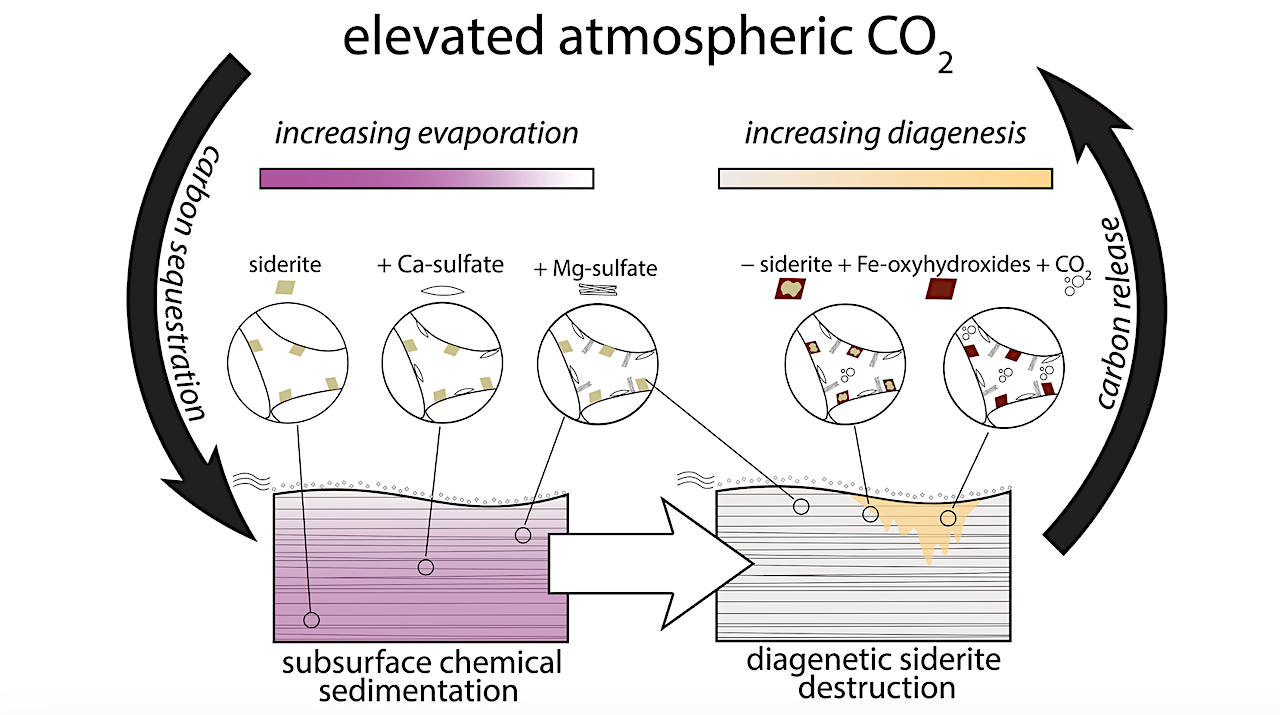
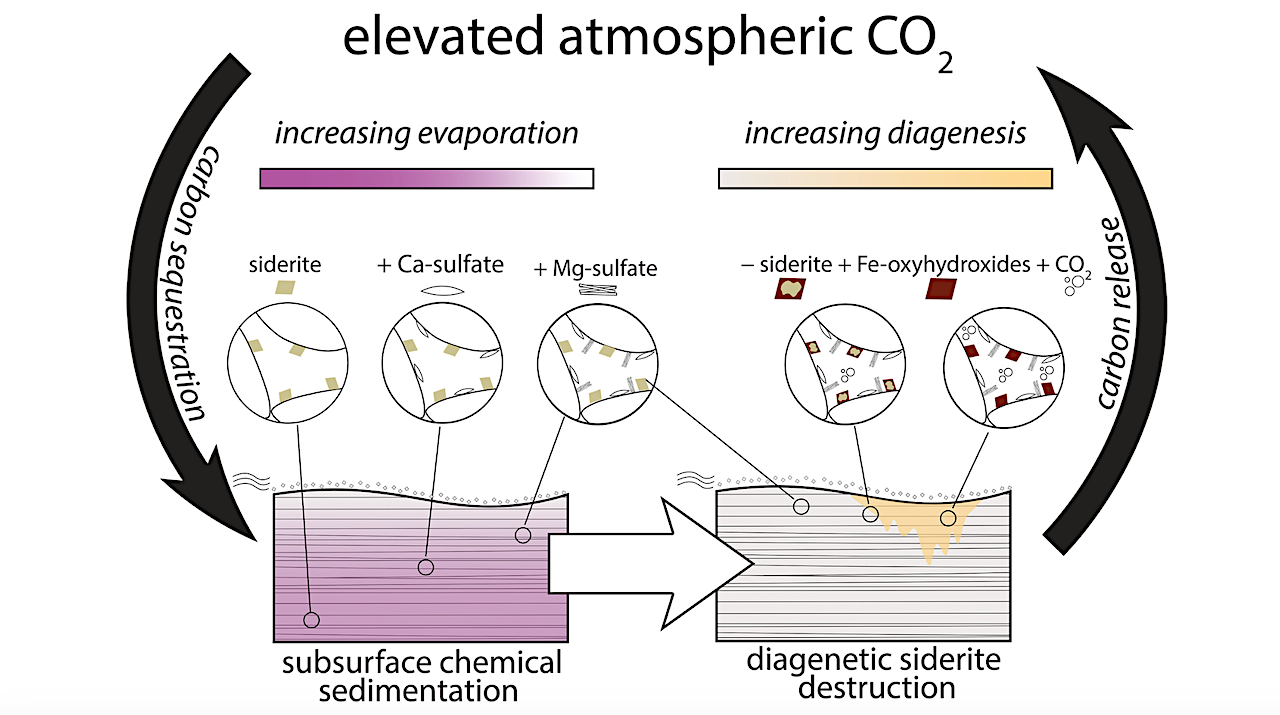
Schematic illustration of our proposed carbon cycle on early Mars. Evaporation of water (pink shading) from subsurface pore spaces initially deposits siderite, which sequesters atmospheric CO2 (black downward arrow). Increasing levels of evaporation deposit Ca-sulfate and Mg-sulfate minerals. Wind-blown (eolian) sedimentation at the ground surface (gray dots) moves the location of evaporation and chemical sedimentation upward with time. After some time (white arrow), infiltration of siderite-undersaturated fluids (yellow shading) partially destroys the previously precipitated siderite, forming Fe-oxyhydroxides and releasing previously sequestered CO2 back into the atmosphere (black upward arrow). — Science
Ancient Mars had surface liquid water and a dense carbon dioxide (CO2)–rich atmosphere. Such an atmosphere would interact with crustal rocks, potentially leaving a mineralogical record of its presence.
We analyzed the composition of an 89-meter stratigraphic section of Gale crater, Mars, using data collected by the Curiosity rover. An iron carbonate mineral, siderite, occurs in abundances of 4.8 to 10.5 weight %, colocated with highly water-soluble salts.
We infer that the siderite formed in water-limited conditions, driven by water-rock reactions and evaporation. Comparison with orbital data indicates that similar strata (deposited globally) sequestered the equivalent of 2.6 to 36 millibar of atmospheric CO2.
The presence of iron oxyhydroxides in these deposits indicates that a partially closed carbon cycle on ancient Mars returned some previously sequestered CO2 to the atmosphere.
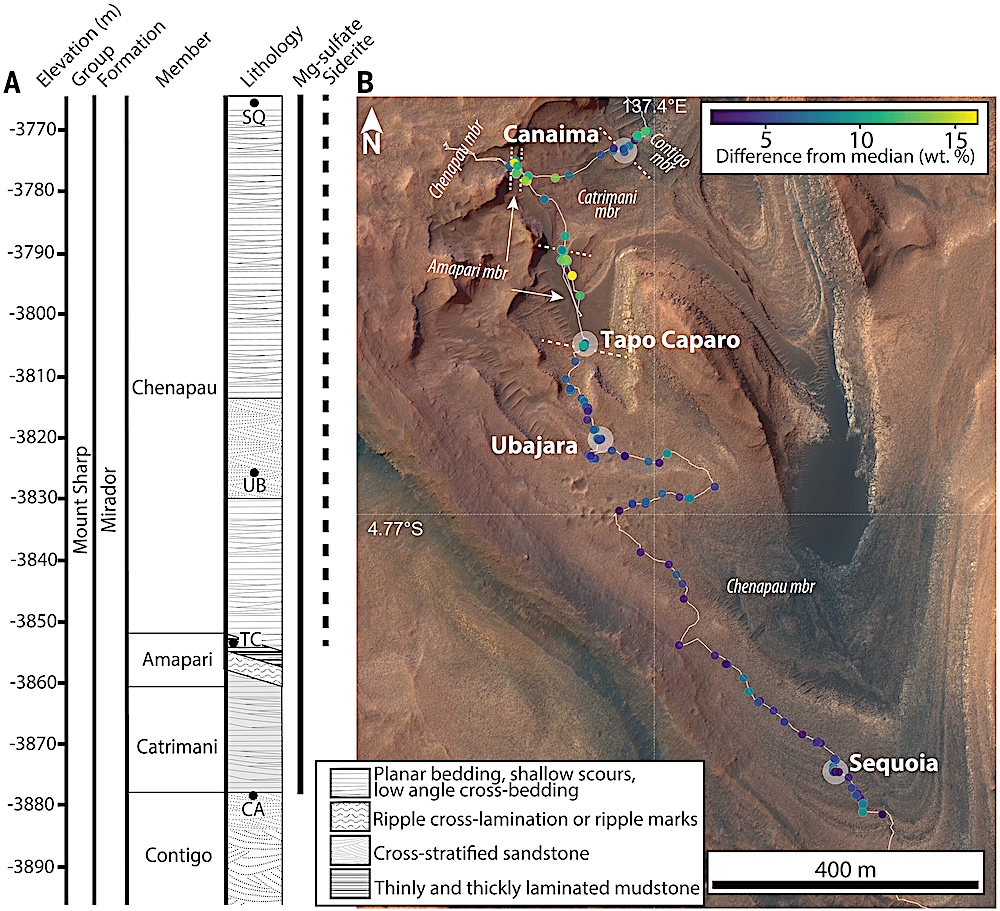
Geological context of the drill samples. (A) Stratigraphic column indicating elevations and sedimentological interpretations of the 89-m vertical section traversed by the rover. Group, formation, and member designate the sedimentary units. Hatching styles indicate the lithology, as indicated in the legend. Black circles indicate drill sample locations: CA, Canaima; TC, Tapo Caparo; UB, Ubajara; and SQ, Sequoia. Vertical thick lines extend between sample elevations where Mg-sulfate minerals (solid line) and siderite (dashed line) have been detected. (B) Orbital optical image mosaic of Gale crater, overlain with Curiosity’s traverse (white line) up Mt. Sharp. Member (mbr) boundaries correspond to the section in (A). The difference between ChemCam observation points and the median Chenapau bedrock composition (19) is plotted as colored circles (as indicated in the color bar) at locations where ChemCam analyses were performed. Chenapau member chemistry is homogeneous and closely resembles the chemistry of the upper section of the Amapari member, near the Canaima drill site. — Science
Carbonates identified by the Curiosity rover indicate a carbon cycle operated on ancient Mars, Science (open access)
Astrobiology,
Stay Informed With the Latest & Most Important News
Previous Post
Next Post
-
 01From Polymerization-Enabled Folding and Assembly to Chemical Evolution: Key Processes for Emergence of Functional Polymers in the Origin of Life
01From Polymerization-Enabled Folding and Assembly to Chemical Evolution: Key Processes for Emergence of Functional Polymers in the Origin of Life -
 02Panasonic Leica Summilux DG 15mm f/1.7 ASPH review
02Panasonic Leica Summilux DG 15mm f/1.7 ASPH review -
 03Two Black Holes Observed Circling Each Other for the First Time
03Two Black Holes Observed Circling Each Other for the First Time -
 04How New NASA, India Earth Satellite NISAR Will See Earth
04How New NASA, India Earth Satellite NISAR Will See Earth -
 05And Thus Begins A New Year For Life On Earth
05And Thus Begins A New Year For Life On Earth -
 06Astronomy Activation Ambassadors: A New Era
06Astronomy Activation Ambassadors: A New Era -
07SpaceX launch surge helps set new global launch record in 2024













